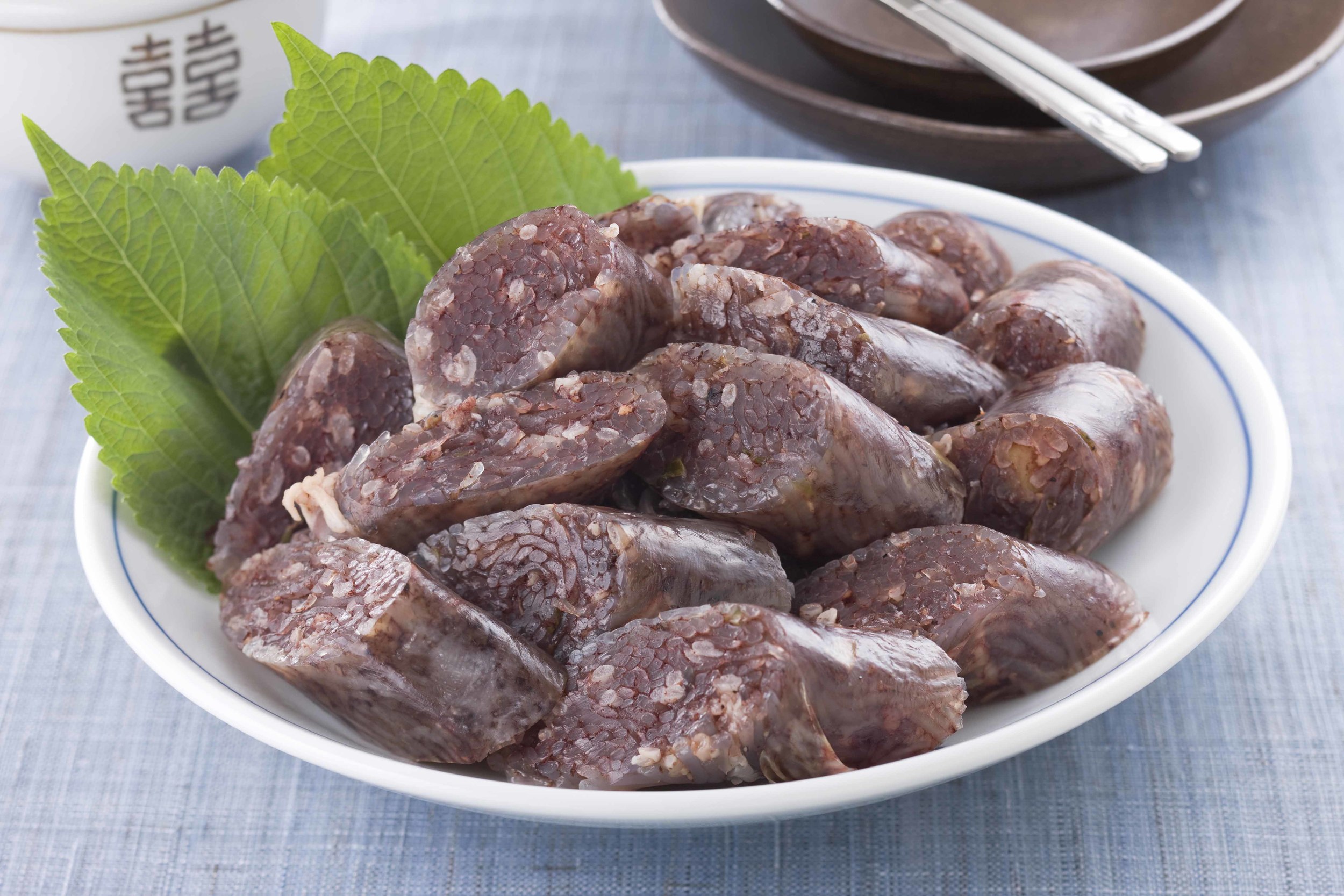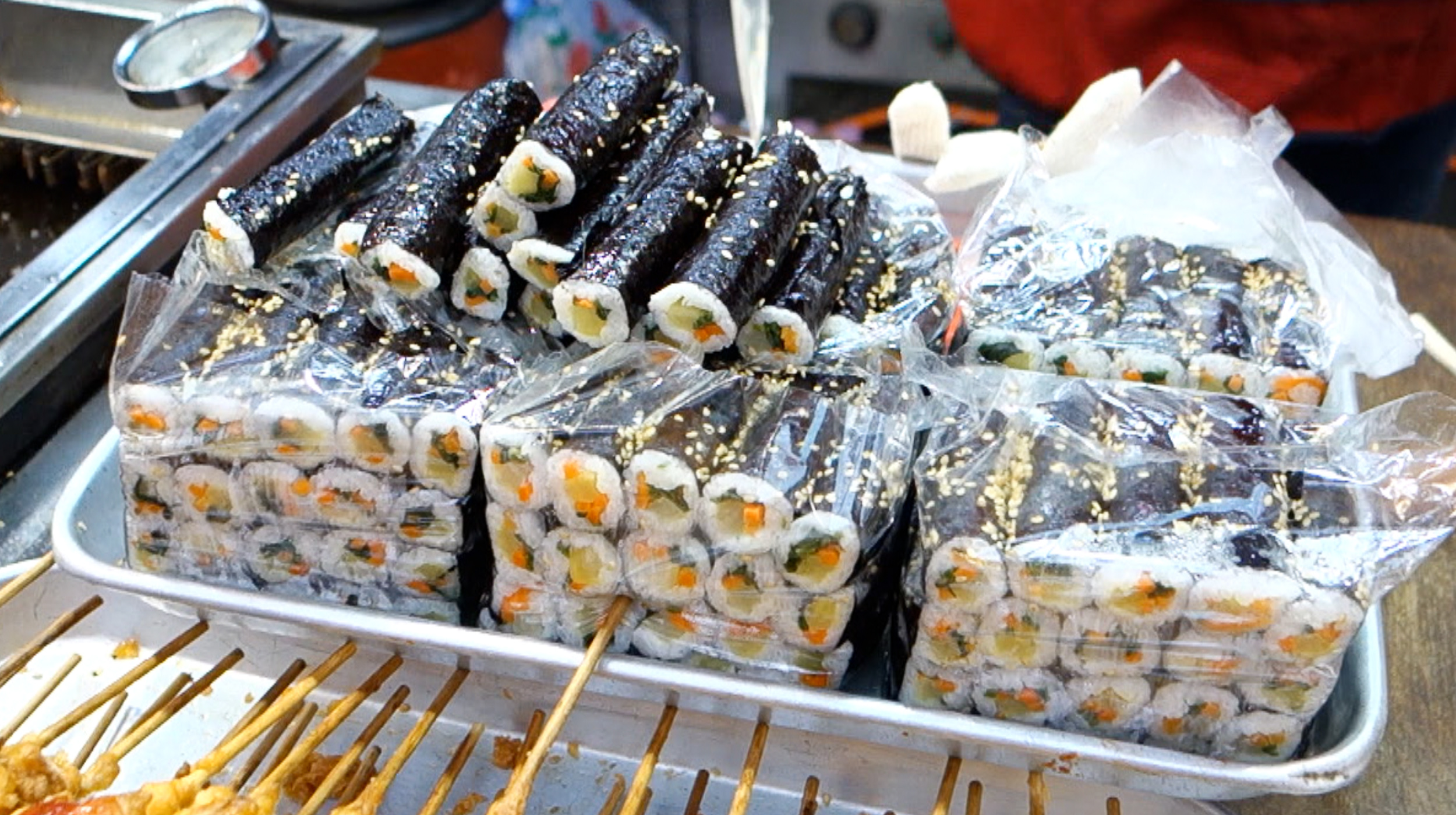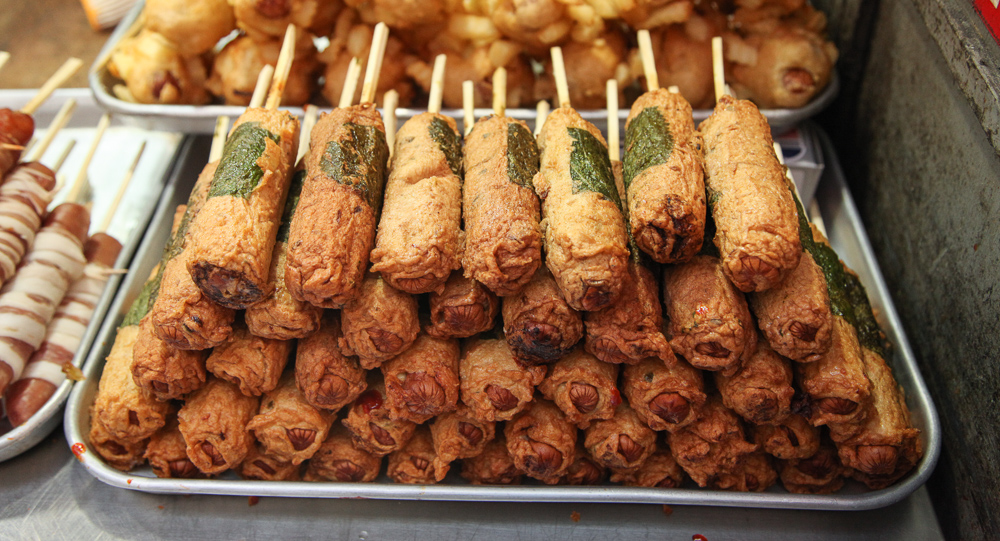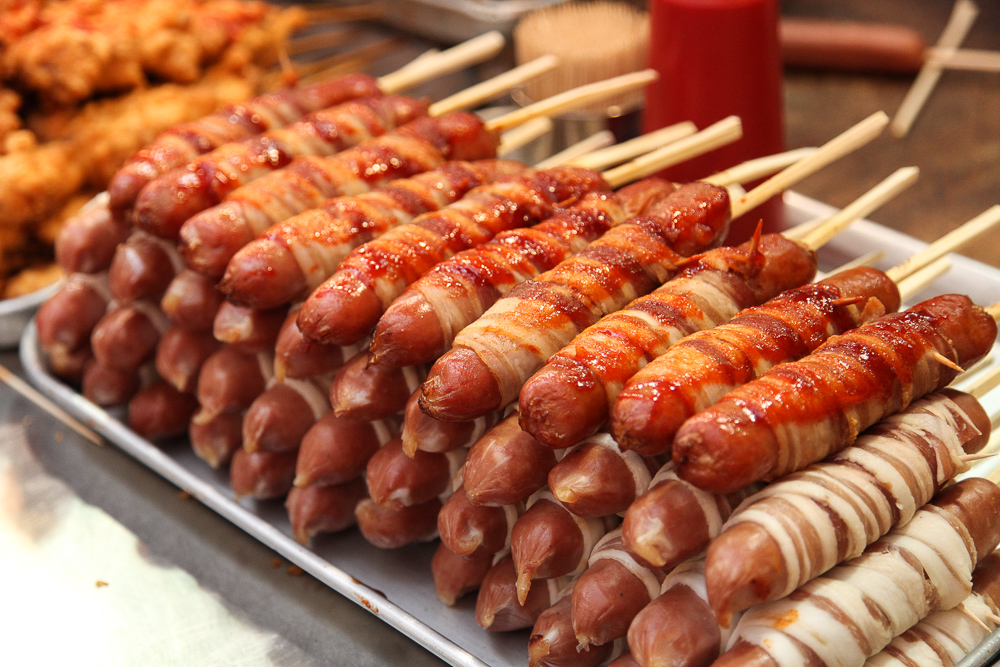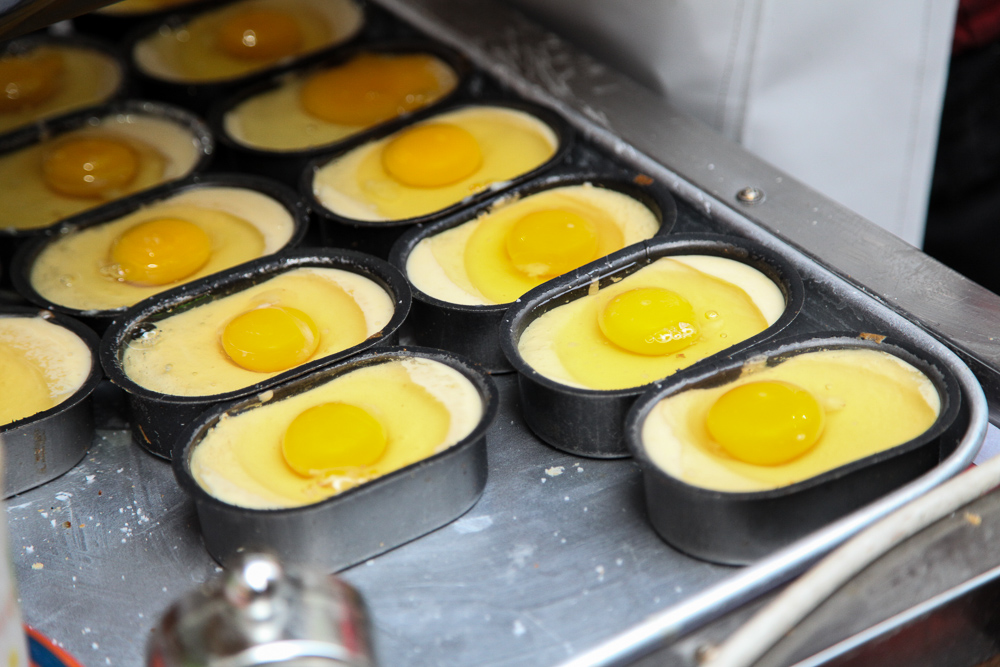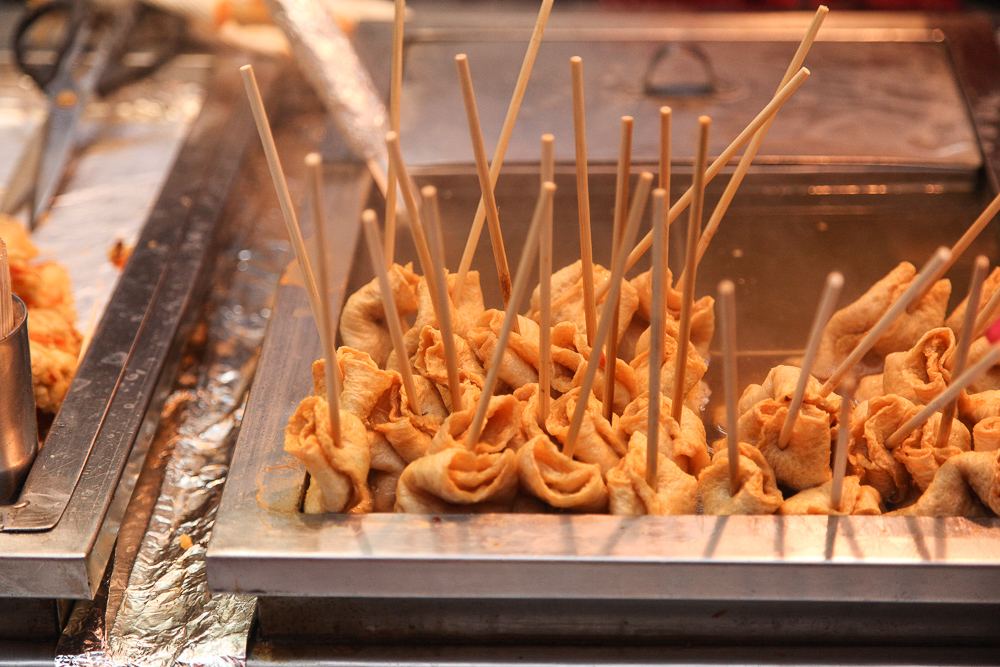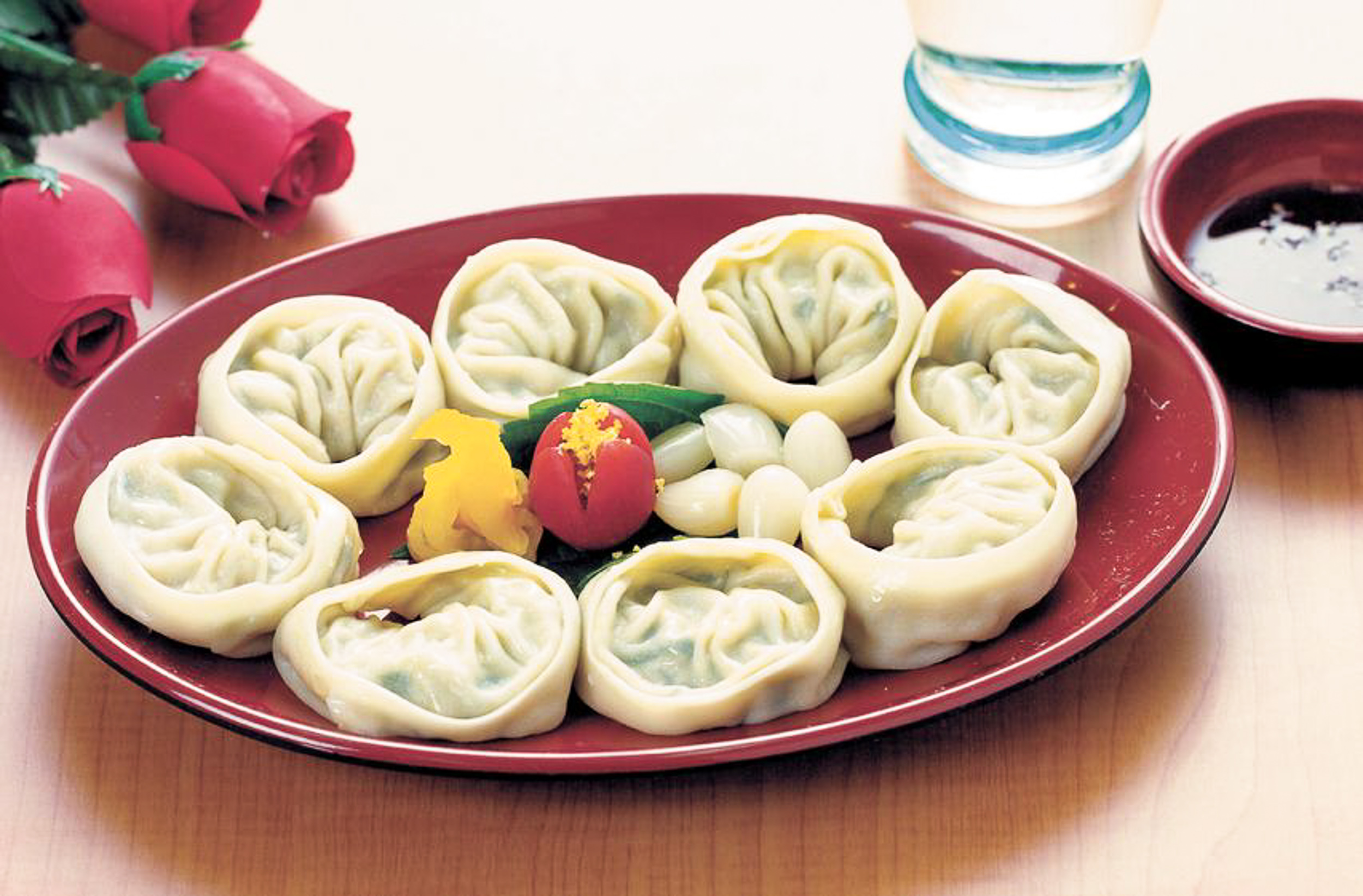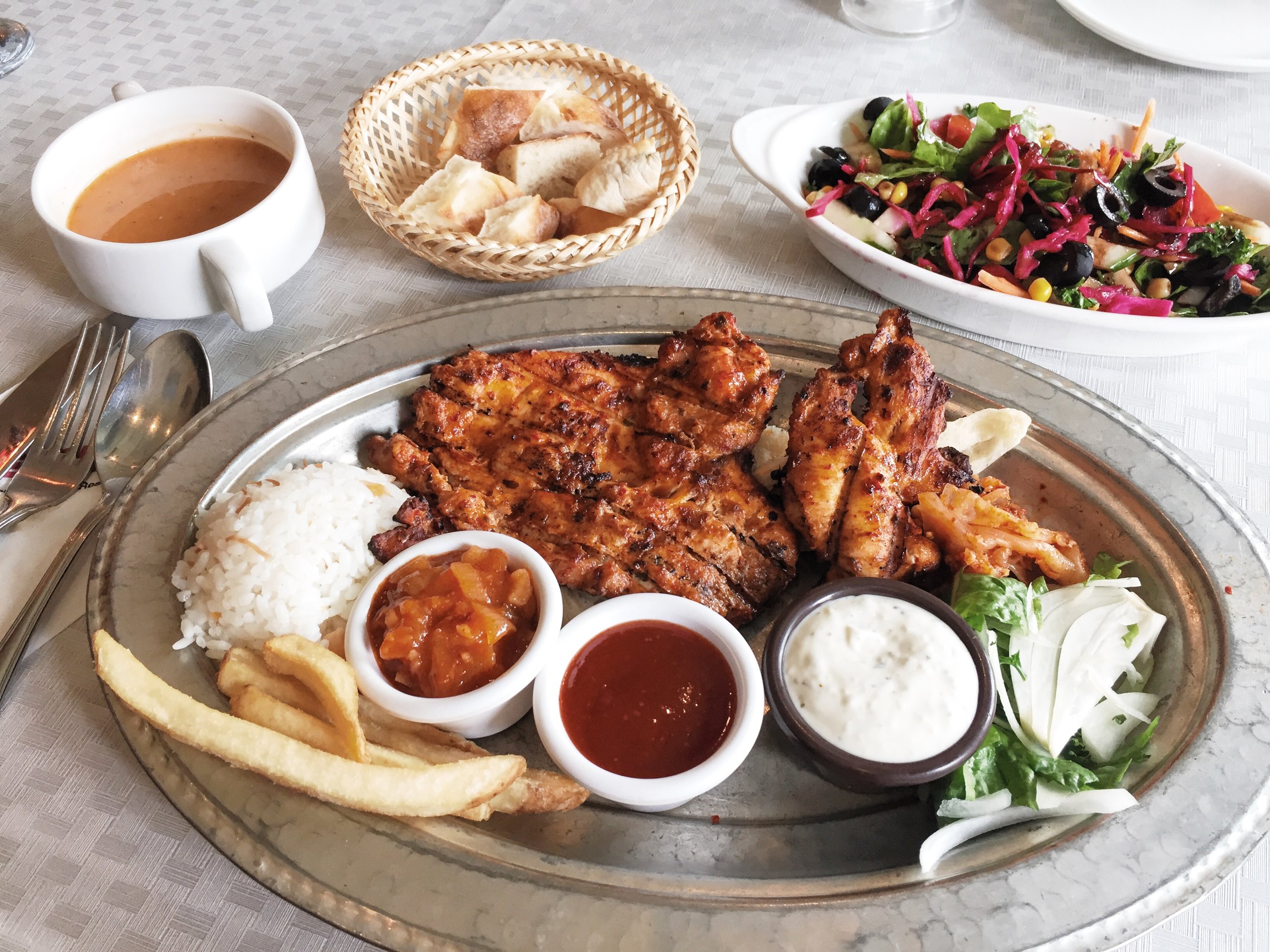1. Stir-fried Ricecakes - 떡볶이 (tteokbokki)
2. Blood Sausage - 순대 (soondae)
3. Korean Carp Bread - bungeoppang (붕어빵)
4. Kimbap - 김밥
5. Fried Kimbap - 김밥 튀김 (kimbap twigim)
6. Long-coned Ice Cream. Enjoy even during chilly winter days!
6b. Ice Cream Saxophone
7. Chicken skewers - 닭꼬치 (dakkotchi)
8. Steamed Silkworm Larvae - 번데기 (beondegi)
9. Old-Fashioned Sugar Candy - 뽑기 (ppopgi)
9b. Woman waiting for customers at her ppopgi stand.
10. Dragon’s beard candy - 꿀타래 (kkultarae)
11. Fishcake-wrapped Sausage
12. Bacon-wrapped sausage
13. French Fry Corndog
14. Egg Bread - 계란빵 (gyeran bbang)
14b. Before the egg bread gets baked. Yolk swimming on the surface.
15. Walnut Dessert - 호두과자 (hodoo gwaja)
16. Cotton Candy - 솜사탕 (somsatang)
17. Fruit (i.e. strawberries) - 과일 (gwail)
18. Fresh Pomegranate Juice - 석류 주스 (sungryu juseu)
19. Meat Unlimited
20. Korean-style Tacos - 타코 (taco)
21. Eomuk (어묵) - aka: odeng
22. Sweet Potatoes - 고구마 (goguma)
23. Smiley Face Fries - 스마일 감자 (seumail gamja)
24. Dumplings - 만두 (mandoo)
25. Sweet Korean Pancake - 호떡 (hotteok)
26. Twister Potatoes - 회오리감자 (hwaeori gamja)
27. Corn - 옥수수 (oksusu)
28. Dried Seafood (Squid & Octopus) - 건어물 (geoneomul)
29. Gingko - 은행 (eunhaeng)
30. Chestnut - 밤 (bahm)
31. Traditional Korean Cookies
For the walking tour of the street foods in Myeongdong, watch KWOW episode 142.



